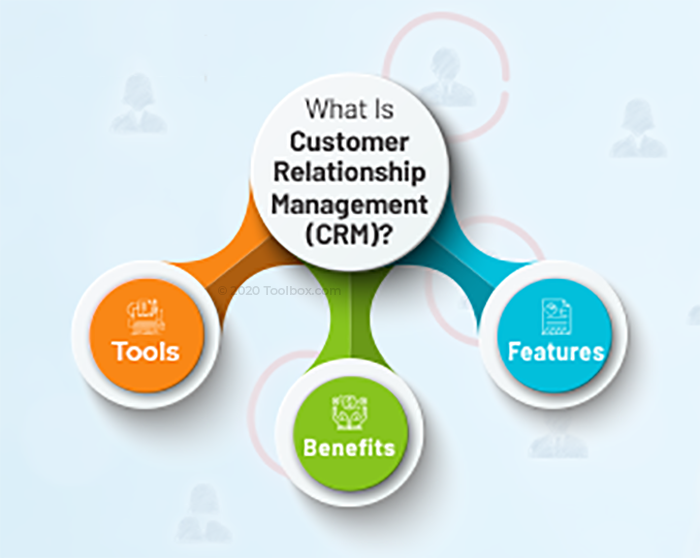In today’s highly competitive business landscape, building and maintaining strong relationships with customers is paramount to success. Customer Relationship Management (CRM) software serves as a powerful tool for businesses to effectively manage interactions with customers, streamline sales processes, and enhance overall customer satisfaction. Implementing CRM software involves a strategic approach encompassing planning, customization, deployment, and ongoing optimization. In this comprehensive guide, we will delve deep into the intricacies of implementing CRM software, providing step-by-step instructions, advanced techniques, and practical insights to help you harness the full potential of CRM technology and drive meaningful customer relationships.
Understanding Customer Relationship Management (CRM):
Before delving into the implementation process, let’s first grasp the concept and significance of CRM:
- Definition: Customer Relationship Management (CRM) refers to the strategies, practices, and technologies used by businesses to manage and analyze customer interactions and data throughout the customer lifecycle.
- Key Objectives: The primary objectives of CRM include improving customer relationships, optimizing sales processes, increasing customer retention, and driving business growth.
- Core Functionality: CRM software typically includes features such as contact management, sales automation, marketing automation, customer service management, and analytics.
Planning Your CRM Implementation:
Implementing CRM software requires careful planning and consideration of various factors:
- Define Objectives: Clearly define your business objectives and identify key areas where CRM software can drive value, such as sales pipeline management, lead tracking, customer support, or marketing campaign management.
- Assess Requirements: Conduct a thorough assessment of your organization’s needs, including user requirements, data management capabilities, integration with existing systems, and scalability.
- Selecting the Right CRM Solution: Research and evaluate different CRM software options to find the solution that best aligns with your business objectives, budget, and technical requirements.
- Customization and Configuration: Determine the level of customization and configuration required to tailor the CRM system to your specific business processes and workflows.
Steps to Implement CRM Software:
Now, let’s explore the step-by-step process of implementing CRM software:
- Data Migration and Integration:
- Identify and migrate existing customer data from legacy systems, spreadsheets, or other sources into the CRM database.
- Integrate CRM software with other essential business systems such as email, marketing automation, ERP, and accounting software to ensure seamless data flow and synchronization.
- Customization and Configuration:
- Customize the CRM software to align with your business processes, terminology, and workflow requirements.
- Configure user roles, permissions, and access controls to ensure data security and compliance with privacy regulations.
- Training and Adoption:
- Provide comprehensive training and support to users to ensure smooth adoption of the CRM system.
- Develop training materials, conduct workshops, and offer ongoing support to address user questions and concerns.
- Testing and Quality Assurance:
- Conduct thorough testing of the CRM system to identify and resolve any bugs, errors, or usability issues.
- Ensure that all customizations, configurations, and integrations function correctly and meet business requirements.
- Deployment and Go-Live:
- Plan and execute the deployment of the CRM system, including data migration, user setup, and system configuration.
- Monitor the deployment process closely to address any issues or challenges that may arise.
Ongoing Optimization and Improvement:
Implementing CRM software is not a one-time event but an ongoing process of optimization and improvement:
- User Feedback and Iteration:
- Gather feedback from users regarding the usability, functionality, and effectiveness of the CRM system.
- Use feedback to identify areas for improvement and implement iterative enhancements to the CRM software.
- Data Analysis and Insights:
- Leverage CRM analytics and reporting capabilities to gain insights into customer behavior, sales performance, and marketing effectiveness.
- Use data-driven insights to refine sales strategies, target marketing campaigns, and improve customer engagement.
- System Maintenance and Updates:
- Regularly maintain and update the CRM system to ensure compatibility with evolving business needs, technology advancements, and security requirements.
- Stay informed about software updates, patches, and new features released by the CRM vendor.
- Continuous Training and Education:
- Provide ongoing training and education to users to keep them informed about new features, best practices, and emerging trends in CRM technology.
- Foster a culture of continuous learning and improvement within the organization.
Conclusion:
Implementing CRM software is a strategic initiative that requires careful planning, execution, and ongoing optimization. By following the comprehensive guide outlined above, businesses can effectively harness the power of CRM technology to build stronger customer relationships, streamline sales processes, and drive sustainable growth. Whether you’re a small business looking to scale operations or a large enterprise seeking to enhance customer engagement, mastering the art of implementing CRM software empowers you to unlock new opportunities for innovation, efficiency, and success. So embrace the power of CRM, embark on your implementation journey with confidence, and transform customer relationships into a competitive advantage that propels your business forward.
